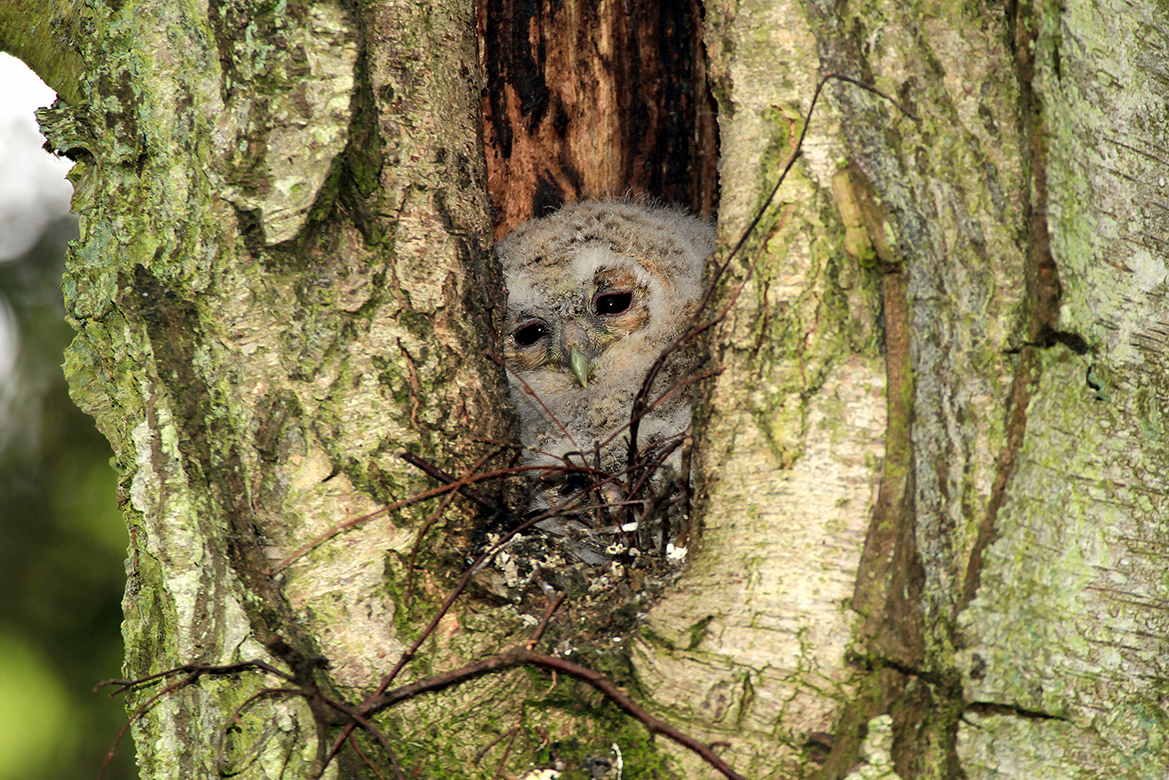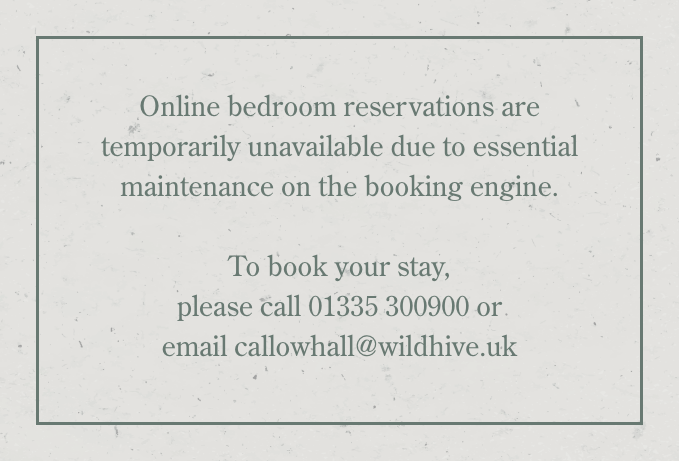Wildhive
Owl Rescue
This little Tawny owlet would have been happily nesting in a hole in a tree in the ancient woodland at Wildhive Callow Hall.
It is thought that a crow took the baby out of the nest and then dropped it. Luckily for this little bird, our lovely porter Dup, who has a great respect for the natural world, noticed it and recognising it was not in great shape took quick action.
With advice from Wildhive Forest Camp leader, Adrian, specialist support was sought by first calling the local vet who recommended contacting Raptor Rescue (Derbyshire).


Tawny owlets are known to fledge the nest before they are able to fly which makes them vulnerable. However, having checked with the local vet and confirming with Raptor Rescue, it was felt that this owlet was too small to have been a branch faller. If it was placed back on a branch it would probably not survive as it would have been susceptible to predators (crows) even though the parents would keep feeding it. The other difficulty was that Dup and Adrian did not know which tree it was nesting in and the trees on the pathway to the Hives are quite tall, so that even if the tree was found it would have been impossible to return the owlet to its nest. Maturer owlets can crawl back up the tree.
The owlet was collected by Mike Beresford, who represents Raptor Rescue locally, and he has taken the owlet away to hand rear it. We caught up with Mike this week to find out how the owlet was fairing and he advised that it is doing really well and has doubled in size. Mike was really quite concerned about its chances of survival as the owlet was quite battered and bruised and he believes this is from a crow attacking and pulling it from the nest as they are known to do.
Mike told us that it is really difficult to determine the sex of a Tawny Owl as the males and females are so similar in size and colouring. It is feeding really well on day old chicks from a local hatchery which are a great source of food and is supplemented with vitamins. In the wild it would be eating mice and insects. Mike is blind feeding it, so it does not become imprinted* with the human species, which will allow it to be released into the wild.
Once the little owlet is strong enough and has full plumage to enable it to fly, it will be returned to Wildhive to be released back into the wild. This could take up to 6 months as the parents would continue to feed the young bird for quite some time.
The owlet is very wild, strong and cautious which are all great signs for a successful release. Watch this space for further updates. Learn more about the great work charity Raptor Rescue does here:
Imprinting
*Imprinting is a form of learning in which an animal gains its sense of species identification. Birds do not automatically know what they are when they hatch – they imprint on their parents during a critical period of development. After imprinting, they will identify with that species for life.
Crows Mobbing
If you have ever noticed a group of crows cawing and making an awful noise in the woods, there’s often an owl at the centre of their attention.
Why do crows attack them so fiercely? Mobbing is a common defence strategy used by crows and other songbirds to overwhelm and confuse predators like owls, hawks or other dangerous animals.
Mobbing involves a group of birds crowding around the danger, calling loudly & even dive-bombing it. If the owl takes flight, the mobbing crows will often chase it in a dramatic aerial pursuit.
Generally, crows attack owls to reduce their risk of predation. Owls do sometimes eat crows and since their nesting habitats frequently overlap, this puts them in close proximity.





